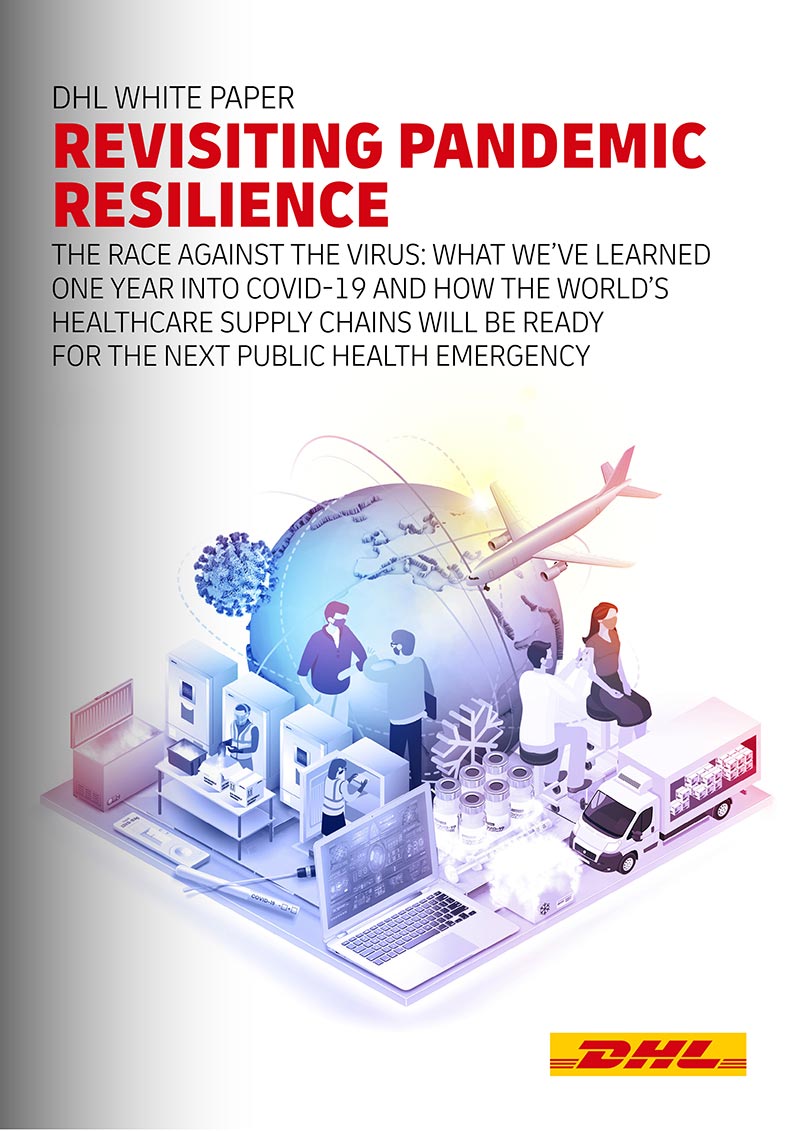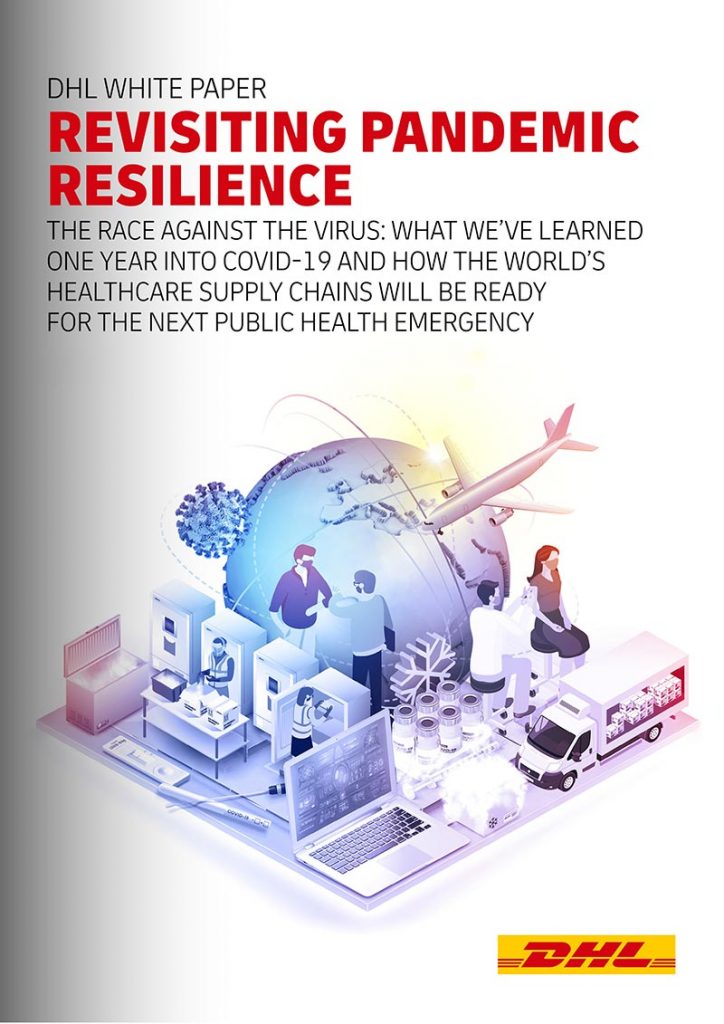
The race against the virus: DHL reveals learnings from one year into COVID-19
- DHL to-date has distributed over 300 million vaccine doses to 140+ countries involving 350+ facilities
- Locally adapted last-mile delivery-distribution models critical beyond 2021
- From 2022 onward, 7-9 billion vaccine doses necessary to keep (re-)infection rates low and slow virus mutation pace
Colombo, Sri Lanka, June, 2021: It has been over an year since the world awoke to the news of the new SARS-COV-2 virus. What followed was the largest global health crisis in 100 years. Disruptions to every aspect of society have been profound. However, logistics and supply chain management have played a vital role in pandemic management to ensure the availability and distribution of key tools; medicines and medical supplies, vaccines, test kits, ancillary supplies, treatments, and personal protective equipment (PPE).
DHL has been part of the response strategy from the beginning having distributed over 300 million doses of all approved vaccines to over 140 countries operating 9,000 flights and involving 350 DHL facilities. This task was undertaken through 50 bilateral and multilateral collaborations with partners in both the pharma and public sector and also created several new dedicated services.
The recently published DHL white paper on ’Revisiting Pandemic Resilience‘ looks back and sheds light into sector learnings on the race against COVID-19 and action necessary to handle public health emergencies in the future.

“Logistics and supply chain management play a key role in pandemic management. Keeping supply chains running and ensuring delivery for essential health supplies provided valuable lessons”, explains Katja Busch, Chief Commercial Officer DHL. “We rolled out new dedicated services for the vaccine distribution at unprecedented speed. All sectors, industries, and nations must work together and form strong partnerships as well as leverage data analytics. We also need to remain prepared for high patient and vaccine volumes, maintain logistics infrastructure and capacity, while planning for seasonal fluctuations by providing a stable and well-equipped platform for the years to come.”
There are important achievements across research and development, production, supply chain management and policy that will help us get through this crisis as a global community. The vaccine was developed five times faster than any other vaccine in history and production also ramped up in record time. Leveraging the capabilities of the logistics and supply chain, the life-saving vaccines reached patients worldwide. Although unprecedented cold chain requirements of up to -70°C had to be met, logistics met these requirements faster than usual. Multilateral action by public health and policy actors also provided a conducive framework for rapid vaccine development and deployment.
Dimithri Perera, Country Manager, DHL Express Sri Lanka, said, “As the pandemic changed the world and also for Sri Lanka, it has been a wake-up call for all facets of our operations. From initially helping the authorities with logistical assistance for medical supplies and equipment to the ongoing critical role in supporting the transport and delivery of COVID-19 aid supplies, DHL’s world-class supply chain expertise and network has made a real difference. We are proud to be able to play a part in this global mission, and stand ready to help to do more in the future to save lives.”
Collaboration key to global vaccine distribution
For high levels of immunization, around 10 billion vaccine doses are required globally by end of 2021. However, only four countries have achieved vaccination rates >50% to-date and many of the remaining countries have less-developed infrastructure, making the rollout more difficult. To speed up vaccine distribution, the following areas need to be looked at:
- Industries and nations must foster collaboration, paying special attention to building strong partnerships and supportive data backbone.
- For safe inbound supply flows, proactive transport-capacity management and sustainable return flows for packaging are needed as 95% of COVID-19 vaccine doses are produced in just eight countries and need to be delivered worldwide.
- Locally tailored last-mile, ground distribution models necessary.
As 7-9 billion doses of vaccines are necessary annually to keep (re-)infection rates low and slow down the pace of virus mutations, the above logistics infrastructure and capacity should continue for several years.
Planning for the future
Active partnerships, expanded global warning systems, an integrated epidemic-preventions agenda and targeted R&D investments are required identify, prevent and plan for future health crises.
Other recommendations include expansion and institutionalization of virus containment and countermeasures (e. g. digital contact tracing and national stockpiles) to ensure strategic preparedness and more efficient response times. To facilitate a speedy rollout of medication, governments and industries should employ ’ever-warm” manufacturing capacity, blueprint research, production, procurement plans and expand local deployment capabilities.
To read the complete white paper, please click on the following link:


